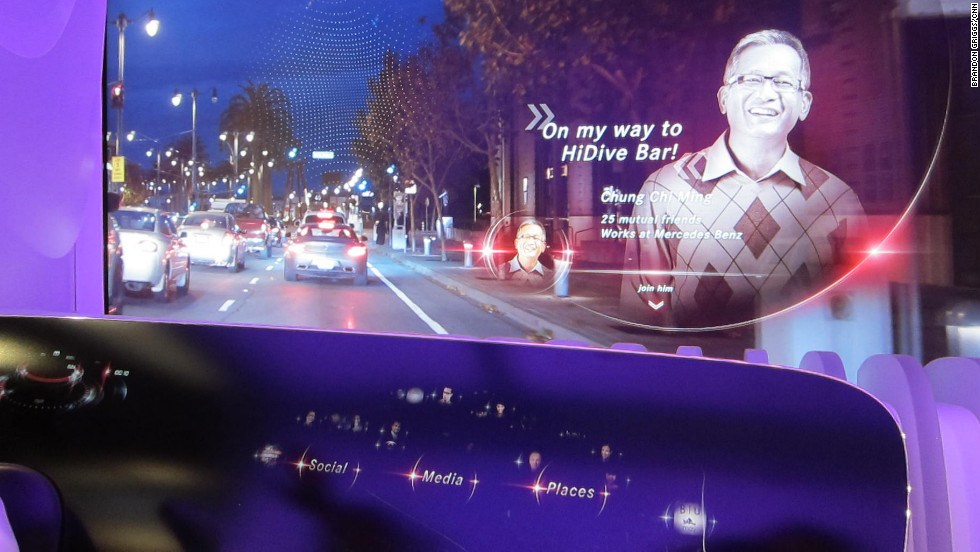It may just be fear of the unknown, the same precautionary principle that makes people worry about having a Twitter login or be concerned about vaccines or GMOs.
Regardless of the reasons for concern, it is a giant error to assume that data and reason will win out, as science has learned painfully about energy, medicine, food and pollution. Trust may instead be established in less direct ways and a recent paper argues that a virtual driver programmed to resemble the human driver could increase the level of trust and acceptance in smart cars.

Mercedes-Benz prototype of an augmented reality, gesture-controlled networking system, shown at CES. Would a virtual driver be so much more difficult?
"We think that the most prominent 'bump' in the road to successful implementation of smart cars is not the technology itself but, rather, the acceptance of that technology by the public," notes Frank Verberne, Behavioral Scientist at Eindhoven University of Technology. "Representing such complex automation technology with something that humans are familiar with -- namely, a human behind the wheel -- may cause it to become less of a 'black box.'"
Verberne and fellow human factors researchers Jaap Ham and Cees Midden introduced 111 participants to a virtual driver named Bob to assess their level of trust in him. The virtual driver's face, head movements, and driving goals (e.g., comfort, speed) were either similar or dissimilar to those of the participant.
Participants planned driving routes with Bob's help, allowed him to take the wheel in a simulator, and then indicated whether or not they trusted him. Results indicated that drivers who perceived Bob to look, act, and think like they did were much more likely to trust his abilities behind the wheel and expressed less concern over their physical safety.
Citation: Frank Verberne , Jaap Ham, Cees Midden, 'Trusting a Virtual Driver That Looks, Acts, and Thinks Like You', Human Factors: The Journal of the Human Factors and Ergonomics Society April 28 2015 doi: 10.1177/0018720815580749






Comments